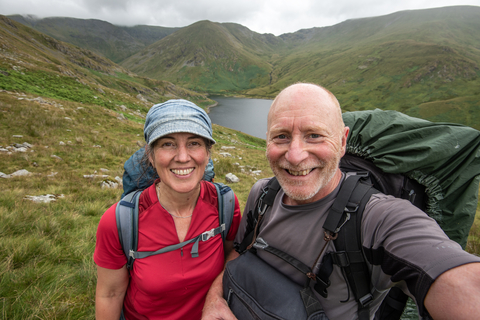
Somewhere Nowhere
'We believe that art does something that other disciplines can’t do – connecting hearts and minds with the natural world, and opening up new and important conversations.'
Rob and Harrier Fraser
somewhere-nowhere
somewhere-nowhere is an environmental art and research practice run by Rob and Harriet Fraser. This is the nomination we received for them:
'They use art and creative innovation to tell the story of nature, to help people see the issues and the solutions, and to make a positive impact on nature's behalf wherever they go. Harriet and Rob develop engaging and interesting exhibits, symposiums, workshops and other creative spaces across Cumbria and beyond in ways that should be celebrated - and copied! They bring communities together and build inspiration and skills through deeply held beliefs around equity of access, humanity's need for nature, and the intrinsic beauty and value of nature and wildlife for its own sake. They deserve to be given some extra love and recognition (although they'd never seek it!).'
Here's more from Harriet and Rob:
'We’re really humbled to have received a nomination as ‘nature heroes’. Thank you!
somewhere-nowhere is the name of our creative practice. Rob is a photographer and Harriet is a writer and poet; we also create land art and outdoor installations. We believe that art does something that other disciplines can’t do - connecting hearts and minds with the natural world, and opening up new and important conversations. Art offers a way ‘in’ on a personal level, and can also be a pivotal ingredient in research within broader teams.
For the past ten years, we’ve done a lot of work in Cumbria, and feel really privileged to have been able to spend time with ecologists, land managers, earth scientists and many of the commoners who know the Lakeland fells and valleys so well. We spend a lot of time walking, and really emphasise the value of slowing down. We follow five basic principles: journey – pause – respond – reflect – connect.
We hope, through our work, not just to inspire others to get outside, slow down, and get involved but also to show different perspectives on shared places: after all, everything is connected – you can’t think about trees or meadows without considering farming, nor can you think about water without thinking about soil, or about birds without thought for insects.
Over the years we’ve shown our work through exhibitions, films and books, and we love leading walks that involve creativity and spark curiosity to learn more about the way the wonderful world around us works, and how humans and nature can work well together. One of the elements of what we do is to shine a light on ‘wonder’. That sense of enchantment, and perhaps even a renewed falling in love with what’s around us, is so important for the way we all connect with and care for the living world.
Since 2011, we’ve worked on projects that focus on upland farming, on water, on walking, on meadows, and on trees. It’s hard to pick a highlight. The Long View project, though, was really special: we spent two years getting to know seven remarkably ordinary trees in Cumbria, created temporary artworks at each tree, produced a book and an exhibition, and walked to the trees with more than 350 people, including school children. The project was never only about trees, though: trees were a way in to conversations about landscapes and ecosystems, the culture of land use that has shaped places, and what’s happening to restore habitats and nature corridors.
Recently we established the PLACE Collective at the UK’s Centre for National Parks and Protected Areas to bring together artists who are driven to work on projects that connect people and nature through practice and research. We’re at a turning point it seems; so much evidence shows that we need to change the way we live, and how we work with the spaces around us and our non-human neighbours. Art, with its poetry and beauty, whether it’s gentle or provocative, has a really important role to play.'
See our 60th Anniversary Arts In Nature events



